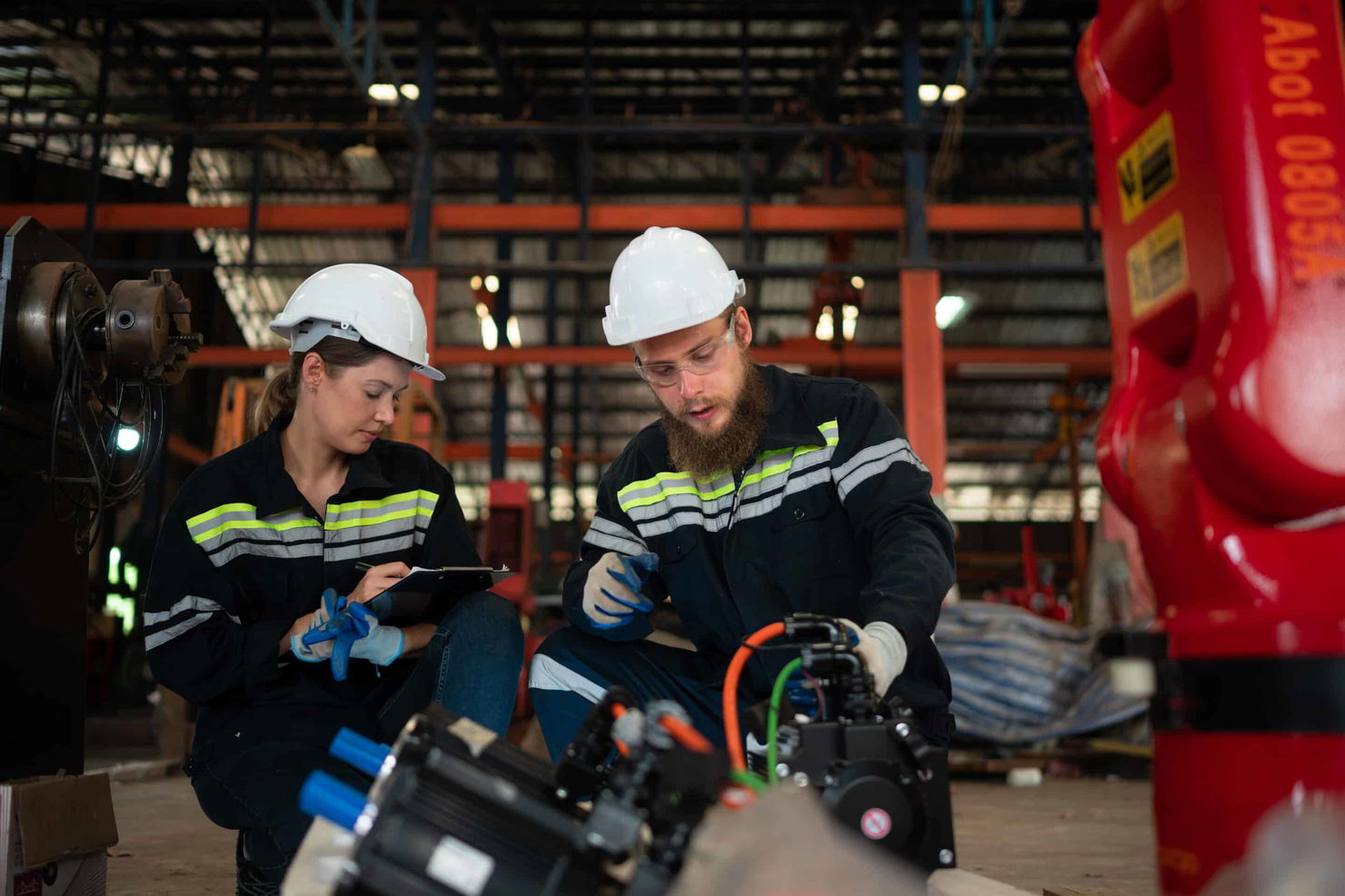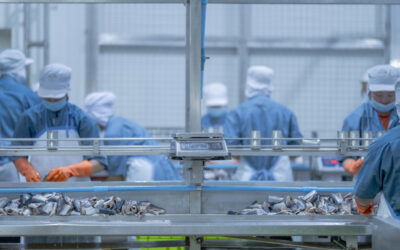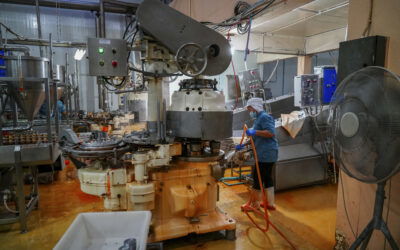In the competitive world of modern manufacturing, operational efficiency defines success. Every production line, every operator, and every minute counts. To maintain profitability, factories must gain a clear understanding of their manufacturing process, identify inefficiencies, and act quickly to correct them. That’s where OEE software comes in.
By analyzing OEE metrics and real-time production data, manufacturers can monitor performance, improve equipment utilization, and achieve measurable gains in productivity. TEEPTRAK’s OEE solution provides this visibility through plug-and-play devices and intuitive dashboards that help teams turn data into decisions.
Understanding Overall Equipment Effectiveness
Overall Equipment Effectiveness (OEE) measures how close your production equipment operates to its maximum potential. It combines three factors—availability, performance, and quality—into a single, powerful percentage. This OEE score identifies where time is lost, whether through planned stops, reduced speed, or quality issues.
The calculation reveals not only the health of your assets but the strength of your manufacturing process itself. When tracked daily through a reliable OEE system, the metric becomes a guide for improvement, driving factories toward world-class levels of productivity.
The Role of OEE Software in Manufacturing Operations
Modern manufacturing operations generate a continuous flow of machine data. Without digital systems, that data remains unused. OEE software converts it into actionable insights, making every downtime event visible.
By identifying patterns such as downtime due to micro-stops or slow cycles, managers can act before problems spread across the production line. The result is improved operational efficiency and a more predictable workflow.
Data, Analysis, and Performance Visibility
Accurate production data is the foundation of every successful factory. OEE software captures and organizes this data automatically, replacing manual reports that are often incomplete or delayed.
The system then translates data into meaningful visuals. Engineers can analyze losses, supervisors can check progress, and executives can review key performance indicators in real time. This transparency aligns every manufacturing team around the same objectives, encouraging collaboration and shared accountability.
Equipment Utilization and Time Data Insights
Every asset’s value depends on how effectively it’s used. By collecting time data and availability information, OEE platforms reveal how much of each day equipment spends in production versus idle states.
This understanding of equipment utilization helps manufacturers make smarter investment and maintenance decisions. Instead of buying new machines, they can optimize the ones they already have—recovering lost time and increasing overall capacity without added cost.
Continuous Improvement Through OEE Metrics
OEE metrics drive measurable improvement by showing exactly where performance losses occur. For example, small stops may appear minor individually but can accumulate into hours of lost production.
Monitoring these details supports a culture of continuous improvement. Each week, teams can review performance, discuss recurring issues, and implement targeted actions to reduce losses. Over time, this discipline transforms the factory into a lean, data-driven organization.
Smart Factory Integration and Advanced Analytics
In the era of the smart factory, OEE tools connect seamlessly with sensors, PLCs, and ERP systems. This integration allows for unified advanced analytics that link machine activity with production orders, quality results, and energy consumption.
With these capabilities, managers gain a full picture of production—from the shop floor to the boardroom. Predictive insights highlight trends and anticipate issues before they affect throughput. The factory becomes not only smarter but more agile.
Monitoring Production Lines in Real Time
Real-time production monitoring ensures that issues are detected and resolved quickly. On a connected production line, OEE dashboards display live performance indicators. Operators can see target vs. actual output and act immediately when deviations occur.
This live visibility reduces delays and eliminates communication gaps between teams. When combined with TEEPTRAK’s intuitive interface, real-time tracking empowers everyone—from operators to plant managers—to contribute to better results.
Visual Factory Dashboards and Data Accessibility
The concept of the visual factory is simple: make performance visible to everyone. TEEPTRAK’s OEE dashboard presents performance, quality, and availability in clear, color-coded displays that anyone can understand at a glance.
When teams see the data in real time, accountability becomes natural. Quick access to current information eliminates guesswork, shortens reaction time, and strengthens team coordination. The factory floor becomes a transparent workspace where decisions are driven by facts, not assumptions.
Enhancing Labor Efficiency and Team Engagement
Effective OEE systems do more than measure machines—they motivate people. By providing real-time feedback, they help operators understand the direct impact of their actions. This awareness increases labor efficiency and engagement.
When the manufacturing team sees performance improving shift after shift, morale rises. Workers become active participants in improvement rather than passive observers. This cultural shift is one of the greatest long-term benefits of OEE implementation.
Key Performance Indicators and Operational Excellence
The best factories measure success through clear key performance indicators. OEE integrates seamlessly into this framework, offering a comprehensive view of production health.
KPIs such as throughput, scrap rate, and machine availability connect operational results with strategic goals. Managers can evaluate productivity across sites, identify best practices, and standardize performance expectations company-wide.
Optimizing Manufacturing Processes for Higher Efficiency
Improving manufacturing processes requires visibility and discipline. By using OEE tools to track the production process step by step, inefficiencies become quantifiable.
Whether it’s setup time, material handling, or operator rhythm, data reveals hidden opportunities for improvement. This clarity allows management to redesign workflows, balance loads across machines, and sustain a rhythm of steady progress.
From Data to Decision: Advanced OEE Capabilities
Modern OEE systems go beyond tracking—they help leaders decide. By merging real-time machine feedback with advanced analytics, managers can simulate outcomes, test process changes, and measure the effect of improvement projects immediately.
TEEPTRAK’s OEE solution offers this intelligence through flexible capabilities designed for dynamic manufacturing environments. Data is no longer static; it becomes a tool for predicting results and optimizing future performance.
Reliability, Functionality, and Operational Efficiency
Sustaining operational efficiency requires consistent reliability. OEE dashboards highlight recurring stops and help prioritize maintenance activities. By understanding which machines cause the most interruptions, engineers can schedule interventions that prevent costly breakdowns.
This focus on functionality ensures that production goals are met with minimal disruption. Every minute saved from unexpected downtime contributes to higher output and lower costs, reinforcing the value of performance monitoring.
Benchmarking and OEE Scores Across Industries
Once OEE data is collected consistently, benchmarking becomes a powerful improvement tool. Comparing OEE scores across machines, shifts, or sites helps managers identify best practices and areas for development.
TEEPTRAK case studies show measurable impact across industries—from automotive to food and electronics—where OEE improvements translated into faster ROI and sustained operational performance.
The Future of Data and OEE Performance
As digital transformation accelerates, the connection between data and OEE performance will deepen. Artificial intelligence and cloud computing will enable automated improvement suggestions, adaptive scheduling, and predictive maintenance at scale.
Future factories will rely on machine learning to enhance reliability, reduce waste, and optimize every aspect of the production process. For TEEPTRAK, innovation means empowering clients to anticipate issues rather than react to themturning monitoring into foresight.
Conclusion
OEE monitoring represents more than a performance metric—it’s a philosophy of operational excellence. By connecting machines, people, and systems, OEE monitoring software gives manufacturers complete control over their operations.
TEEPTRAK delivers a fast, flexible OEE software solution that connects any machine, collects accurate data, and visualizes it instantly. Through real-time tracking, intuitive dashboards, and powerful analytics, factories gain the clarity needed to make continuous progress.
Ready to see it in action? Book a live demo to discover how TEEPTRAK’s OEE monitoring software connects instantly to your machines and delivers results within days.
Or contact our team to discuss your specific manufacturing challenges and learn how we can help you improve performance and ROI.




0 Comments